Propagation is one of the most rewarding parts of plant care. With a few simple steps, you can turn a single plant into many, expanding your collection or sharing with friends—all at little to no cost. But while many plant lovers focus on cuttings, soil, and light, one crucial factor often gets overlooked: the container.
The right container can make the difference between thriving new roots and failed propagation attempts. Whether you’re rooting in water, soil, or specialized mediums, choosing the right vessel will help your cuttings develop strong, healthy root systems.
In this article, we’ll explore the best containers for successful propagation, the pros and cons of each, and tips to maximize your success.
Why Containers Matter in Propagation
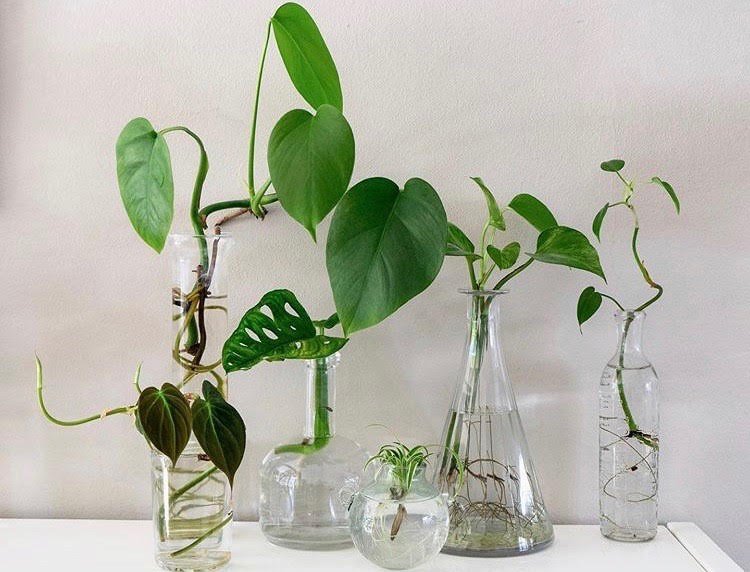
Before diving into the options, it’s important to understand why containers play such a vital role in propagation. They:
- Support Root Development – A good container allows enough room for roots to grow without overcrowding.
- Provide Proper Drainage or Aeration – Roots need both moisture and oxygen. The wrong container can lead to rot.
- Maintain Stability – Containers keep delicate cuttings upright while roots establish.
- Affect Light Exposure – Clear containers help monitor root growth, while opaque ones prevent algae buildup.
- Influence Microclimate – Certain containers help regulate humidity and temperature, critical for fragile cuttings.
The Best Containers for Different Propagation Methods
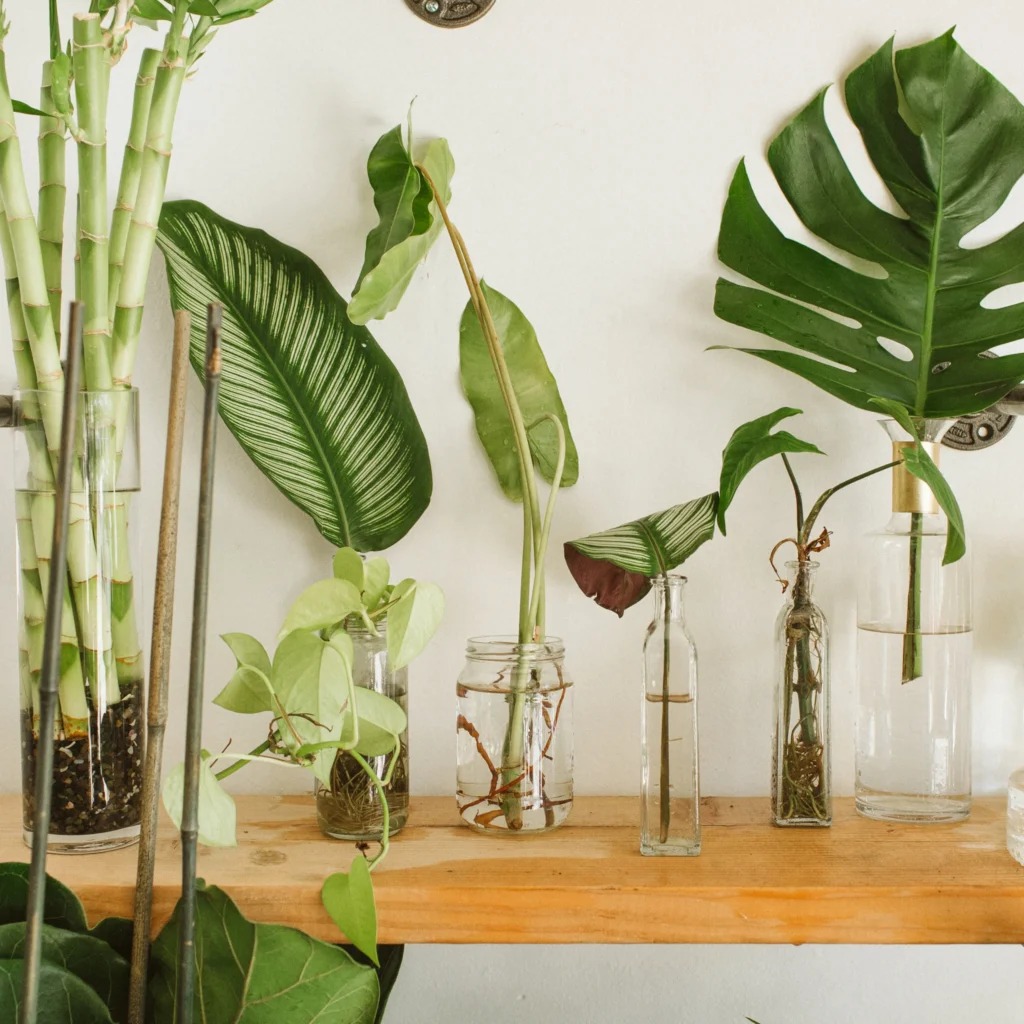
There’s no single “best” container—it depends on whether you’re propagating in water, soil, or specialized mediums. Below, we’ll cover the most effective types.
1. Glass Jars and Bottles (Water Propagation)
Best for: Pothos, philodendron, coleus, spider plant, tradescantia
Clear glass jars are a classic choice for water propagation. They let you watch roots grow while keeping cuttings hydrated.
Pros:
- Transparent—easy to track root development
- Wide range of shapes and sizes
- Recyclable and inexpensive
Cons:
- Light exposure encourages algae growth
- No drainage (not suitable for soil propagation)
- Can be heavy and breakable
Tips:
- Use narrow-neck bottles to support upright stems.
- Change water every 5–7 days to prevent bacterial growth.
- Place in bright, indirect light for best results.
2. Clear Plastic Cups
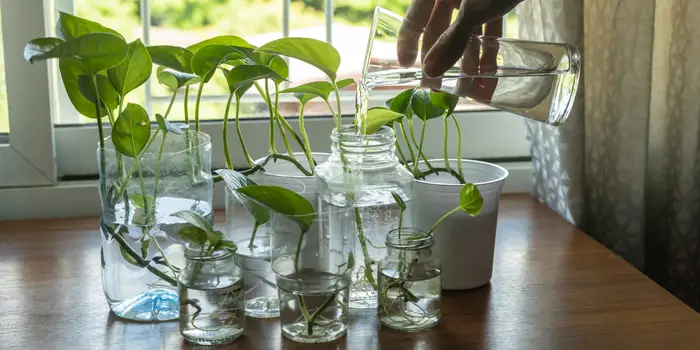
Best for: General cuttings, seedlings
Plastic cups are lightweight, disposable, and versatile. When used for soil propagation, poking drainage holes at the bottom prevents waterlogging.
Pros:
- Inexpensive and widely available
- Easy to customize with drainage holes
- Lightweight and transparent
Cons:
- Not very durable (can crack or warp)
- Less attractive than glass or ceramic options
- Clear plastic can heat soil quickly in direct sun
Tips:
- Use double-cup method (inner cup with holes inside a solid outer cup) to catch excess water.
- Label cuttings directly on the cup to stay organized.
3. Terracotta Pots
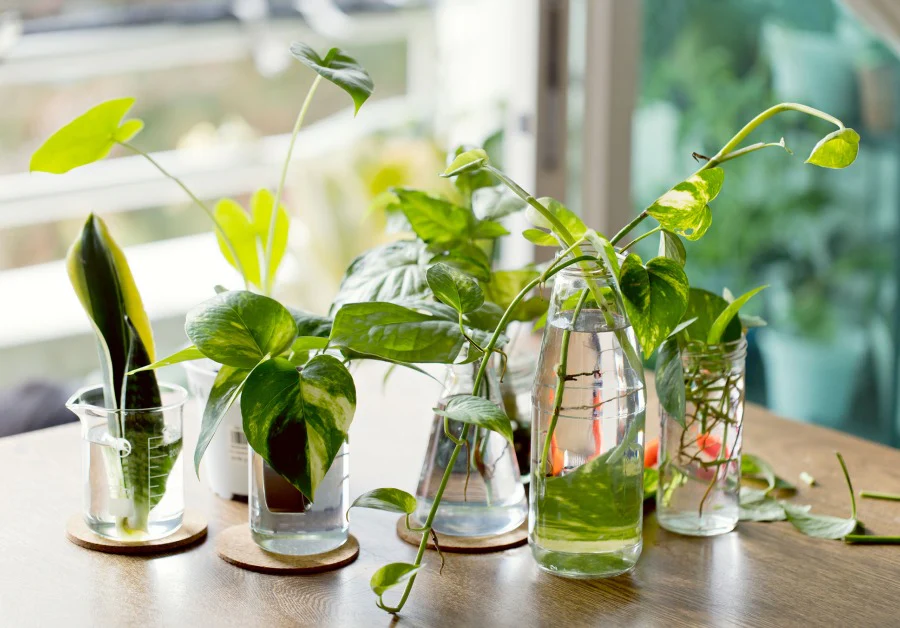
Best for: Succulents, cacti, and other soil-based propagation
Terracotta pots are ideal for plants that prefer drier conditions. Their porous material allows air circulation and prevents root rot.
Pros:
- Excellent breathability for roots
- Classic aesthetic for indoor displays
- Naturally wicks away excess moisture
Cons:
- Soil dries out quickly—needs regular monitoring
- Heavy and breakable
- Not transparent (can’t see root progress)
Tips:
- Best for hardy cuttings that don’t require constant moisture.
- Choose smaller pots to avoid overwatering.
4. Propagation Stations (Glass Tubes in Wooden or Metal Holders)
Best for: Decorative water propagation of vining plants
Propagation stations have gained popularity on social media thanks to their aesthetic appeal. They typically feature test tube-style containers held in a wooden or metal frame.
Pros:
- Stylish and decorative—looks great in any room
- Perfect for multiple cuttings at once
- Easy to change water
Cons:
- Limited size for larger cuttings
- Still prone to algae buildup
- More expensive than DIY options
Tips:
- Place in a well-lit spot, but not in direct sun.
- Rotate cuttings regularly to encourage even root growth.
5. Plastic Nursery Trays and Cells
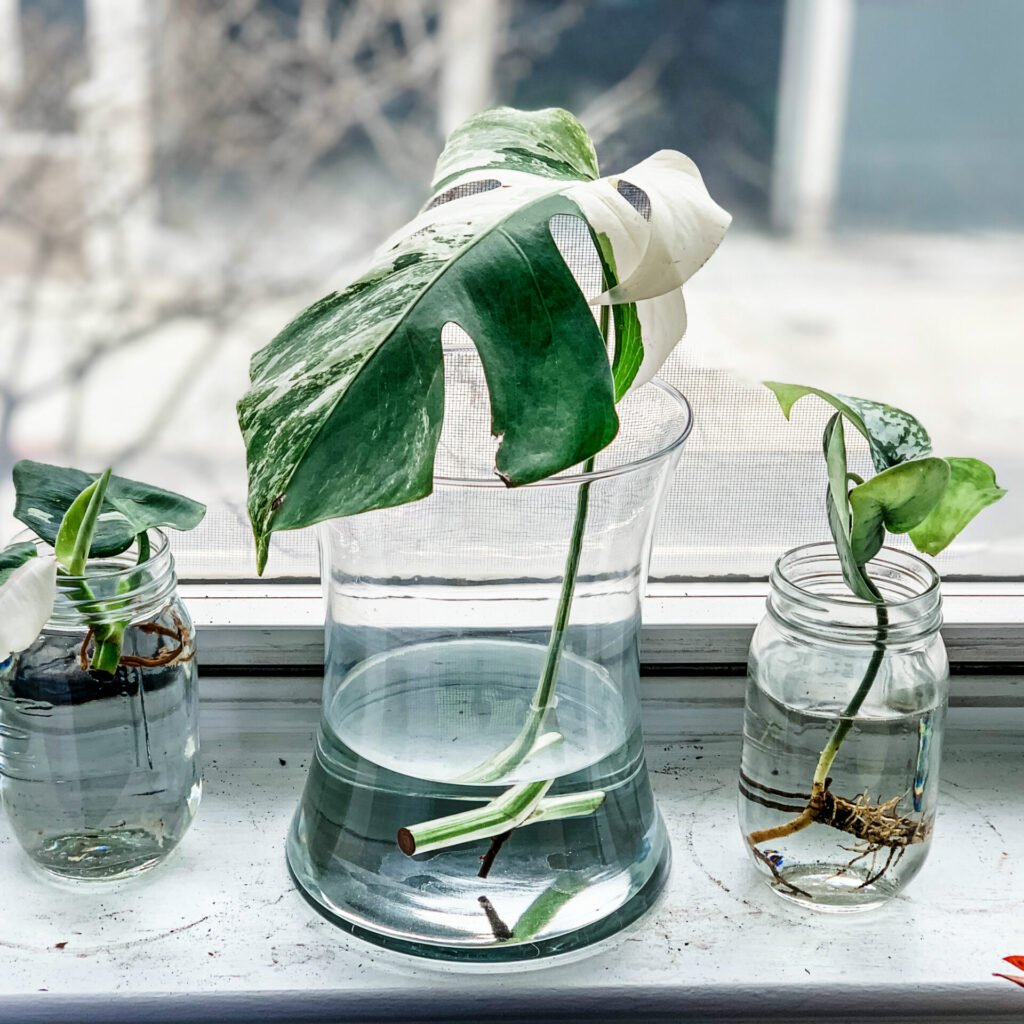
Best for: Seedlings, herb cuttings, bulk propagation
Nursery trays are designed for efficient propagation, allowing you to grow multiple cuttings at once. They’re widely used in greenhouses and by professionals.
Pros:
- Great for large-scale propagation
- Uniform drainage across cells
- Easy to handle and transport
Cons:
- Requires space and good organization
- May dry out faster in shallow cells
- Less decorative for indoor displays
Tips:
- Use a humidity dome to retain moisture.
- Keep trays on a heat mat for faster root development.
6. Mason Jars with Net Pots (Hydroponic Propagation)
Best for: Hydroponic setups, herbs, leafy greens
Combining mason jars with net pots allows for semi-hydro propagation, where cuttings develop roots in water while being stabilized by clay pebbles or perlite.
Pros:
- Supports hydroponic growth long-term
- Reduces algae with opaque jar covers
- Provides aeration to roots
Cons:
- Requires extra setup and materials
- Not as simple as traditional water propagation
Tips:
- Cover the jar with foil or tape to block light and prevent algae.
- Change water every 1–2 weeks.
7. Upcycled Containers
Best for: Budget-friendly propagation of most plants
Household items like yogurt cups, glass bottles, and food containers can be repurposed into propagation vessels.
Pros:
- Eco-friendly and cost-effective
- Wide variety of shapes and sizes
- Perfect for experimenting
Cons:
- Not always durable or decorative
- May require extra effort to add drainage
Tips:
- Sanitize containers thoroughly before use.
- Drill or poke drainage holes for soil-based propagation.
Choosing the Right Container: Factors to Consider
When selecting a container for propagation, ask yourself:
- What plant am I propagating?
- Vining plants do well in glass jars.
- Succulents prefer terracotta or plastic pots with soil.
- What medium am I using?
- Water → clear glass or plastic
- Soil → terracotta, plastic pots, or nursery trays
- Hydroponics → mason jars with net pots
- Do I need visibility?
- Clear containers let you track roots, but can grow algae.
- How many plants am I propagating?
- One or two? A jar or tube is fine.
- Many? Use trays or multiple cups.
- Do I want it decorative or practical?
- Propagation stations double as home décor.
- Plastic cups and trays are more functional for bulk growth.
Tips for Propagation Success
No matter what container you choose, follow these best practices:
- Keep it clean – Always sterilize containers before use.
- Maintain proper moisture – Avoid overwatering or letting cuttings dry out.
- Provide the right light – Bright, indirect light works best for most cuttings.
- Change water regularly – If using water, refresh weekly to prevent bacteria.
- Label your cuttings – Especially important if you’re propagating multiple species.
- Be patient – Some plants root in a week, while others take months.
Final Thoughts
The container you choose for propagation isn’t just a vessel—it’s a crucial part of the rooting process. Whether you prefer the elegance of glass jars, the practicality of nursery trays, or the rustic charm of terracotta pots, the right choice will depend on your plant type, medium, and goals.
For casual indoor propagation, glass jars and propagation stations combine beauty with functionality. For larger projects, nursery trays or plastic cups are cost-effective and efficient. And for specialized needs, mason jars with net pots or terracotta planters provide the perfect environment.
By matching your container to your plant’s needs, you’ll give your cuttings the best chance at success—ensuring your home fills with healthy, thriving new plants.
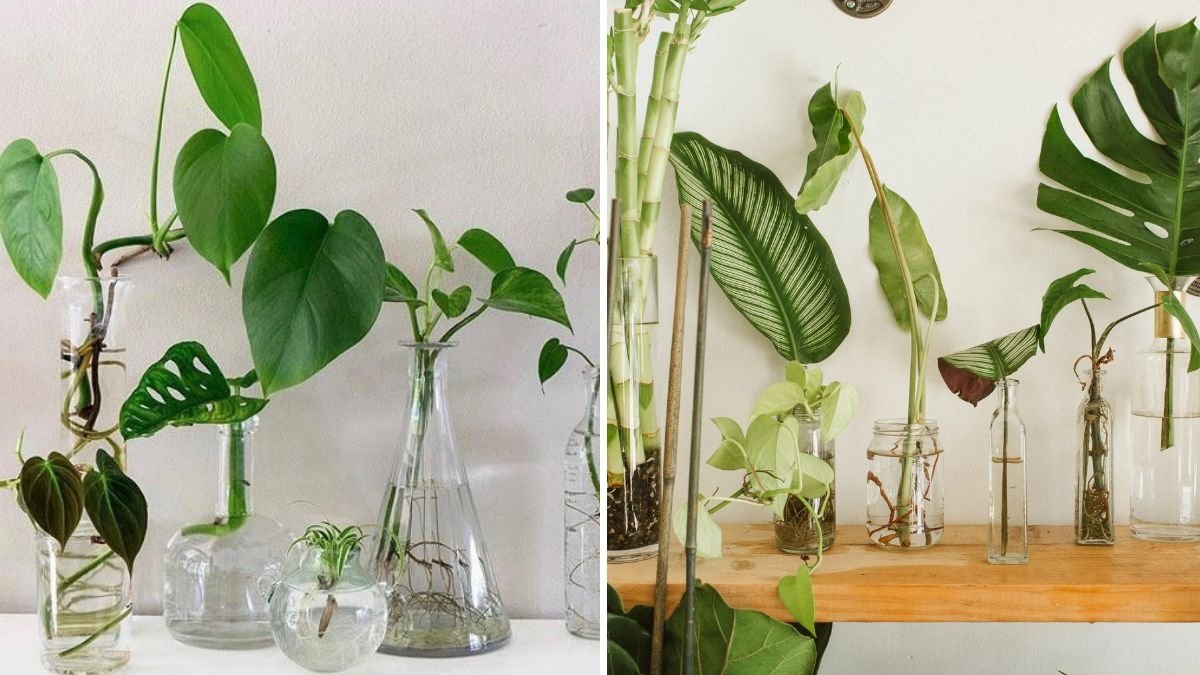




Leave A Comment